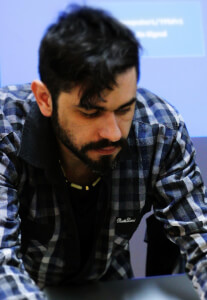If we read the audio signal as a sign and thus a signifier – signified construction as, we start scrutinizing aural simulacra. Postmodernist thinkers and scholars have elaborated extensively on the fact that reality seems to have started being preceded by things that are not real. While this idea has been explored within the world of the tangible and of appearances, such an analysis has been overlooked regarding the immaterial realm of the aural. Specifically Inspired by what Jean Baudrillard defines as the ‘orders of appearances’, we explore an analogy and introduce ‘the orders of the heard’. These are signals of the sacramental order, the order of maleficence, the order of sorcery and that of pure aural simulacra.
During this endeavor, we now stumble upon the order of sorcery, which refers to good copies of profound realities without originals. Which signals are of the order of sorcery? Such signals should not be captured, copied or reproduced. They should be conjured just like golems, creations of the sound artist, designed and produced to serve his purposes. We think that there is a possibility that quite a few could fall into what Masahiro Mori defined as ‘the uncanny valley’. But Is there an acoustic uncanny valley? If the answer is affirmative, we need to identify the point at which the audio signal falls into it.
In order to recognize, appreciate and to analyze the ramifications such signals may have on the audience as well as on one’s artistic practice, we need to proceed with application. With this article, through practice and research, while journeying through the immaterial realm of acoustic hyperreality we introduce the signals of ‘the order of sorcery’ of ‘the orders of the heard’ and their place within auditory arts and research.
Back







